César’s palace: restoring Luis Barragán’s Casa Prieto-Lopez
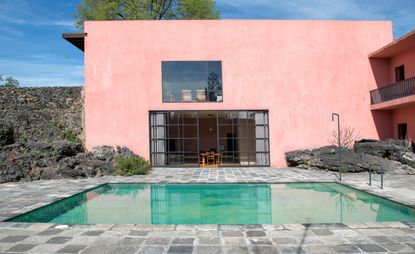
Mexico City’s topography spans the remains of a drained lake, several waves of concrete urban sprawl in a valley surrounded by mountains, and the hard black volcanic grounds that lent inspiration to one of the city’s best examples of modern architecture – El Pedregal. This housing development owes its name, literally meaning ‘rocky place’, to the petrified lava that covered an area of some 80 sq km, deposited when the Xitle volcano erupted some 1,600 years ago. The area remained largely undeveloped until the mid-20th century.
This changed drastically in the 1940s, when Mexican architect and future Pritzker Prize winner Luis Barragán started working on El Pedregal, a residential experiment aiming at bringing together architecture and landscape. The project was well received by clients, who saw in the design a possibility for new beginnings in an unexplored part of town.
The area soon became a breeding ground for experimentation, accruing works by architects such as Max Cetto, Mathías Goeritz, Francisco Artigas, Pedro Ramírez Vázquez and, of course, Barragán. Casa Prieto-López was designed in the late 1940s by Barragán and is widely recognised as one of his most iconic residential projects. The house remained in the hands of the Prieto family until a couple of years ago, when it came on the market; the first from Barragán’s ‘golden period’ to be offered for sale. The biggest collectors in the world came calling, but it was eventually bought by businessman and art collector César Cervantes, who had moved to El Pedregal as a seven-year-old in the early 1970s and become mesmerised by the aesthetics of petrified lava.
Cervantes then invited his friend and fellow Barragán admirer Jorge Covarrubias to embark on one of the country’s most important restoration projects. Renaming the house Casa Pedregal, it soon became Cervantes’ biggest labour of love, with one clear objective – to rid the house of alterations added over time and return the design to its original purity. The team likened the process to ‘modern archaeology’, stripping down layers of recent history in search of the building’s beginnings and its original homely feel.
‘This house is not a museum. I wanted it to be a real house. I don’t even believe in museums; how am I supposed to live inside one?’ says Cervantes. ‘People think I don’t live here. They ask me why I have bottles of alcohol. They think they are props, but they’re not.’
Covarrubias, co-founder of local practice Parque Humano, confesses he had no idea where to start with the restoration. Even though his passion for Barragán was long standing, and he had worked in the past with Ricardo Legorreta, one of Barragán’s most proficient apprentices, this was the first project of its type for his office. ‘I did a lot of research about Barragán,’ recalls Covarrubias. ‘I felt an honest affinity with him, a real connection. I’m very interested in the formal representation of architecture, and the way poetry is constructed, and urban relationships.’
After studying numerous photographs, historical documents and local stories, and consulting with academics that specialise in Barragán’s work, the team bit the bullet and started on site, finding pleasure not only in the project’s possibilities but also its challenges. ‘Every single day, every moment, I discovered something new,’ says Cervantes. ‘The way the light bathes the walls, the way the colour changes with time, the relationship between the full and the empty.’
Cervantes confesses it was only when they were six months into the renovation works that he felt he could relax a little and breathe easy. And although the team’s mission had been to restore the house to its original state, they decided they also wanted to keep some memories and scars of the house’s life with the Prieto family, including marks on the wall where they had installed a lift, an old dividing wall, and a staircase.
Following 20 months of restoration works, the house is now back to its original midcentury form. Cervantes and Covarrubias modestly insist that they actually didn’t do much – at least nothing that Barragán hadn’t done before them. But they have breathed new life into this 66-year-old structure, which comes alive when Cervantes pumps up the volume of his sound system, reminding us that this is not a museum, but a real home.
As originally featured in the June Issue of Wallpaper* (W*207)
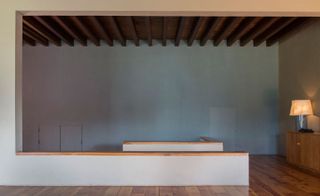
A staircase rises from the entrance foyer into an open-plan living and dining area

Cérvantes wanted the house to be restored to its original condition, and to be a real home
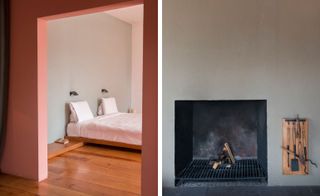
Pictured left: a perforated wall, a Barragán trademark, allows light to subtly penetrate internal spaces. Right: the minimalist fireplace, for cooler days in Mexico City, features the house’s original wall-hung companion set
INFORMATION
For more information, visit the Parque Humano website
Photography: Adam Wiseman. Copyright Barragan Foundation / 2016, DACS
Wallpaper* Newsletter
Receive our daily digest of inspiration, escapism and design stories from around the world direct to your inbox.
-
 ‘There are hidden things out there, we just need to look’: Studiomama's stone animals have quirky charm
‘There are hidden things out there, we just need to look’: Studiomama's stone animals have quirky charmStudiomama founder's Nina Tolstrup and Jack Mama sieve the sands of Kent hunting down playful animal shaped stones for their latest collection
By Ali Morris Published
-
 Tokyo firm Built By Legends gives fresh life to a performance icon, Nissan’s R34 GT-R
Tokyo firm Built By Legends gives fresh life to a performance icon, Nissan’s R34 GT-RThis Japanese restomod brings upgrades and enhancements to the Nissan R34 GT-R, ensuring the cult of the Skyline stays forever renewed
By Jonathan Bell Published
-
 Squire & Partners' radical restructure: 'There are a lot of different ways up the firm to partnership'
Squire & Partners' radical restructure: 'There are a lot of different ways up the firm to partnership'Squire & Partners announces a radical restructure; we talk to the late founder Michael Squire's son, senior partner Henry Squire, about the practice's new senior leadership group, its next steps and how architecture can move on from 'single leader culture'
By Ellie Stathaki Published
-
 HW Studio’s Casa Emma transforms a humble terrace house into a realm of light and space
HW Studio’s Casa Emma transforms a humble terrace house into a realm of light and spaceThe living spaces in HW Studio’s Casa Emma, a new one-bedroom house in Morelia, Mexico, appear to have been carved from a solid structure
By Jonathan Bell Published
-
 An Oaxacan retreat offers a new take on the Mexican region's architecture
An Oaxacan retreat offers a new take on the Mexican region's architectureThis Oaxacan retreat, Casa Caimán by Mexican practice Bloqe Arquitectura, is a dreamy beachside complex on the Pacific coast
By Léa Teuscher Published
-
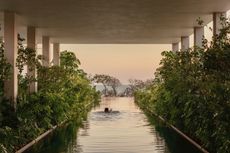 Take a plunge at Brandílera House on the Mexican Pacific Coast
Take a plunge at Brandílera House on the Mexican Pacific CoastBrandílera House by Manuel Cervantes Estudio is a Mexican Pacific Coast retreat making the most of its views and green site
By Ellie Stathaki Published
-
 Step inside Quinto Sol house, a verdant oasis in Mexico's Pacific Coast
Step inside Quinto Sol house, a verdant oasis in Mexico's Pacific CoastQuinto Sol house by architect Cristina Grappin blends indoors and outdoors in a masterful architectural composition in the Mexican countryside
By Ellie Stathaki Published
-
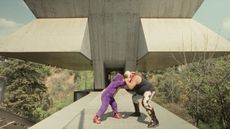 Lucha Libre and modernist architecture meet in Mexican short film ‘El Luchador’
Lucha Libre and modernist architecture meet in Mexican short film ‘El Luchador’‘El Luchador’ blends Lucha Libre and architecture, in a Mexican short film set in Agustín Hernández Navarro's modernist home Casa Praxis in Mexico City
By Ellie Stathaki Published
-
 Mexico’s Amelia Tulum is where ‘the architecture becomes part of the jungle’
Mexico’s Amelia Tulum is where ‘the architecture becomes part of the jungle’Amelia Tulum by Sordo Madaleno combines a human-centred approach and lots of greenery to craft a Mexican residential community like no other
By Ellie Stathaki Published
-
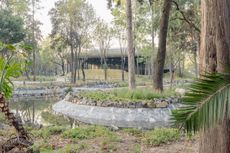 Scenic Garden offers architectural pavilions and a new green lung for Mexico City
Scenic Garden offers architectural pavilions and a new green lung for Mexico CityScenic Garden, designed by Michan Architecture and a team of collaborators, adds green infrastructure to Mexico City's bustling urban experience
By Ellie Stathaki Published
-
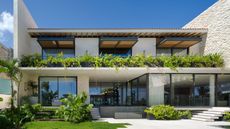 A Cancun retreat by Mexico’s Vieyra Estudio takes inspiration ‘from the ocean’
A Cancun retreat by Mexico’s Vieyra Estudio takes inspiration ‘from the ocean’Casa Nube, a new Cancun retreat by Vieyra Estudio, merges sea, style and sustainability in a private residence defined by a series of pools and terraces
By Léa Teuscher Published